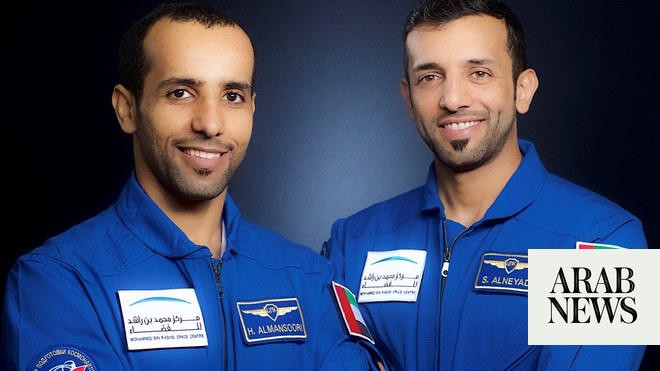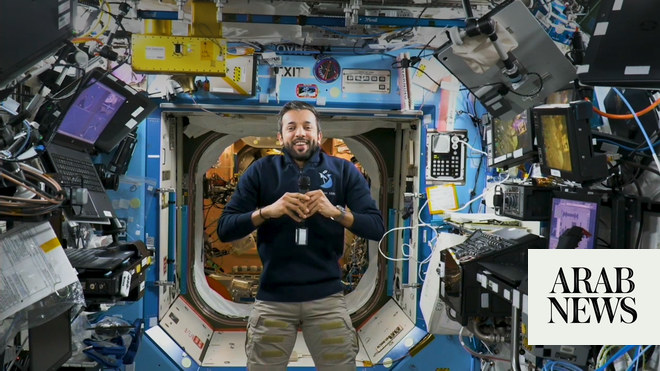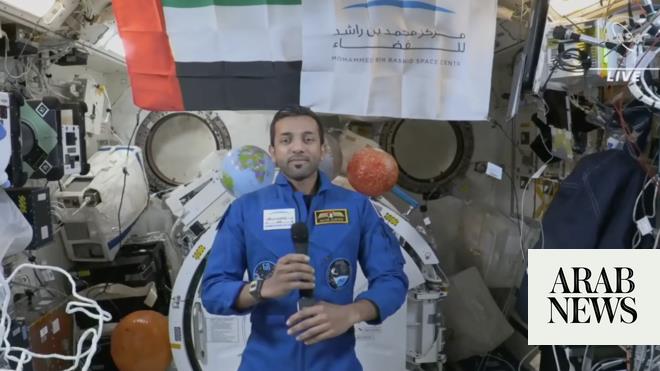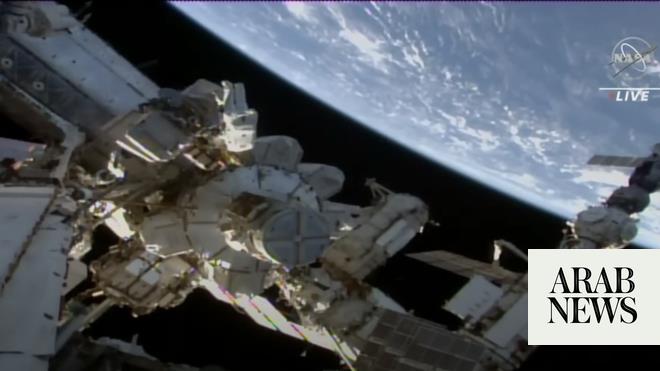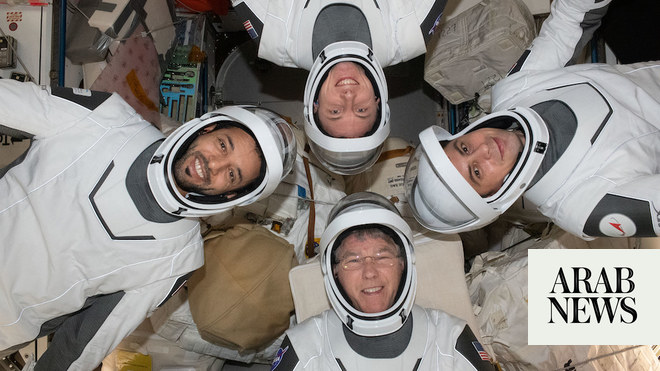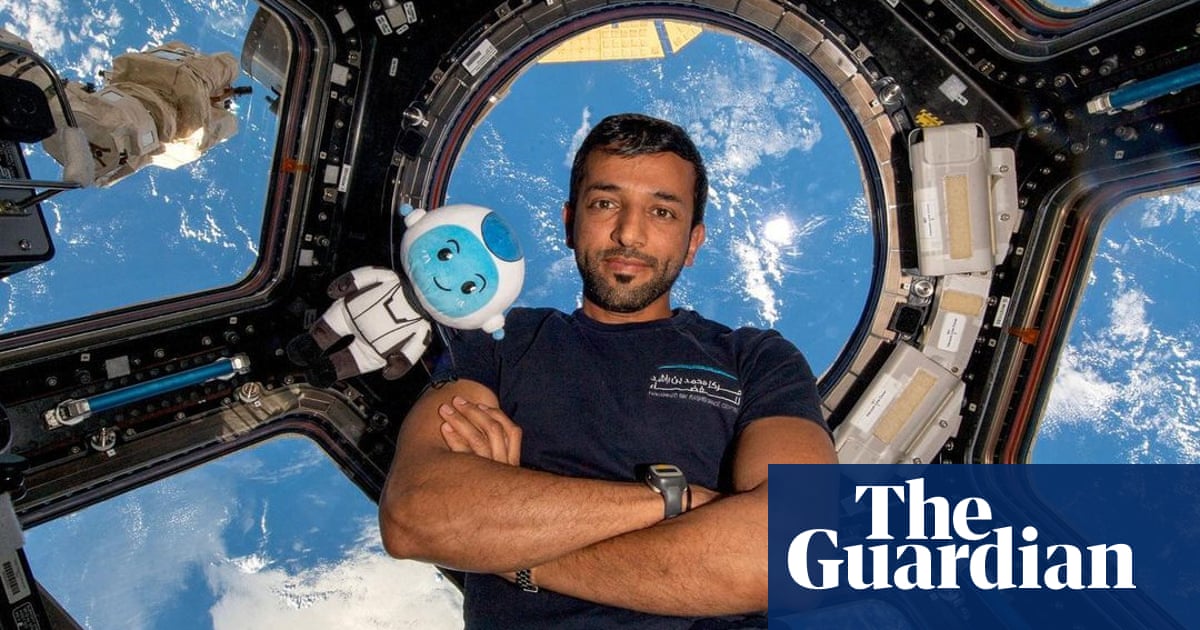
Deep and soul-stirring, the songs of the late Egyptian icon Umm Kulthum have been played countless times in taxis and coffee shops across the Arab world. Now, thanks to the musical tastes of a pioneering Emirati astronaut, they have found their way to the sterile white halls of the International Space Station.
Sultan al-Neyadi, who is set to make history this weekend after completing the longest ever Arab space mission, has told the Guardian from orbit that he felt a responsibility during the mission to bring a taste of Arab culture to space.
“Everybody is watching us; everybody is excited about space,” Neyadi said in a recorded video message while floating in microgravity. “I heard a lot of my colleagues say: ‘It’s really nice to hear a different language on the station.’”
More than half of the several hundred people who have ventured across the boundary of space have been Americans, with celestial travel dominated for decades by Nasa-trained astronauts or Russian cosmonauts. So far, there have been only six visitors to space who are Arabs, now known as “najmanauts” based on the Arabic word for star, “najm”.
As well as vital scientific experiments, Neyadi has made use of his six-month trip to the ISS, which spins around the globe at a speed of about 17,500 mph (28,000 km/h) and an altitude of roughly 250 miles (400km), to bring the wonders of space to the Arab world.
The 42-year-old flight engineer has posted regular video updates in Arabic on social media about life in the space station, explaining his abnormal daily life, from eating vacuum-packed space food to keeping fit in a “weightless” environment by using a weight-lifting device that creates its own resistance.
Asked if he felt pressure as one of a handful of najmanauts to get people in the Middle East and North Africa engaged in space exploration and science, Neyadi told the Guardian there is a huge audience in the Arab world “thirsty to learn more about space”.
“It’s our responsibility to deliver the knowledge and deliver these findings to them in an easy and interesting way,” he said. “Especially the youngsters ... I would love to be a source of information, a source of inspiration for them. So it’s really a big responsibility.”
At the same time, Neyadi has provided a refreshing perspective for the global space-watching community, taking photographs of Middle Eastern cities and famed locations that celebrate a region often negatively stereotyped in the west.
“Here is the beautiful and historical city of Baghdad, the cornerstone of the golden age of knowledge,” Neyadi wrote in a tweet early in his mission. “Scholars from this great city sparked the flames of discovery, setting the course for modern science. Their legacy reminds us to keep reaching for the stars.”
In another image of the Lebanese capital,he described Beirut as “the city that breathes art, culture, and beauty”, while the Suez Canal was the “heart of global trade … [that] has brought continents closer for over 150 years”.
His images have created a lot of online excitement and are taken using a camera in the space station’s “cupola”, a small module with six side windows overlooking Earth. “A lot of people were responding, and they were happy and they were really excited to see their place being tweeted from space. And many people wanted their home towns or countries to be shown from space. So it’s really amazing to engage an audience in space activity.”
During his long trip, Neyadi filmed himself celebrating the Muslim Eid al-Fitr festival in space, playing Qur’anic prayers and wearing a white Emirati kandura, a traditional long garment. In another video, he floats through the station to the sound of Umm Kulthum’s voice in the background.
“This place is called the International Space Station,” he told the Guardian, emphasising the word “international”. “We have a large audience that needs to understand from both sides – an Arab astronaut living and working aboard the station, and then they learn about the culture that we are from and the region.”
The najmanaut, who studied at the University of Brighton and went on to join the UAE Armed Forces, has broken several records while in space, including becoming the first Arab to perform a spacewalk, which lasted for seven hours – although he says he “really didn’t feel” the time pass at all.
And in May, two Saudi najmanauts, Rayyanah Barnawi – the first Arab woman in space – and Ali al-Qarni, joined Neyadi for an eight-day mission. It was the first time three Arabs were in space together at the same time.
Neyadi said the arrival of his two colleagues was “really surreal”. “Just thinking of two, or three in that regard, astronauts meeting in space and speaking Arabic – it was really amazing.”
Several months later, Neyadi was preparing for his return. He is due to depart on Saturday but will not be back on the ground until Sunday, although his mind is already focused on earthly luxuries. “The first thing I will do is have a hot shower,” he said, “and the second will be to have a real cup of coffee.”




